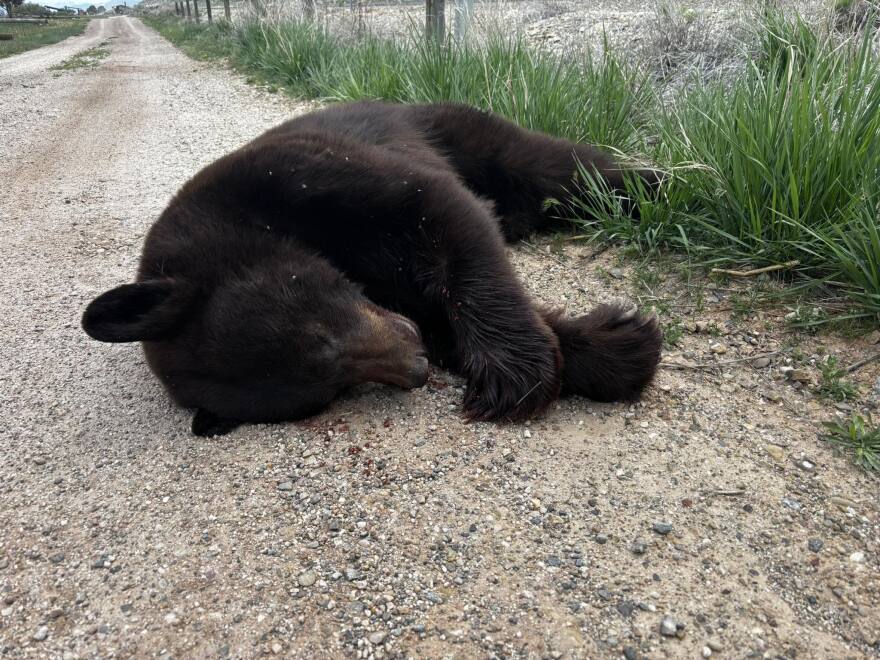In the 16 years Andrew Stokes has lived near Bear Lake, he can’t recall a single instance of a bear being struck by a vehicle near its turquoise-blue waters.
As the Idaho park manager for Bear Lake State Park, Stokes says he hasn’t even heard of many visitors encountering black bears — animals once so common the lake was originally called “Black Bear Lake,” before trapping nearly erased them from the area by the early 1900s.
So when he got the call in May that a black bear had been struck and killed near Cisco Beach — a dry, open stretch far from ideal bear habitat — he was both surprised and saddened.

“Just to see a bear on the east side would have been incredible,” Stokes said. “To have it killed was a sad deal.”
The park posted the news on its Facebook page, urging the growing number of visitors to stay alert and exercise caution while traveling around Bear Lake. The post received an outpouring of comments from concerned visitors and locals, many expressing sadness over the loss and surprise at the unusual sighting.
“Let’s honor the memory of this bear by keeping our eyes open,” the post said, “slowing down, and respecting the land we share with the wild.”
While the sighting — and tragic death — of the bear was unexpected, Utah wildlife experts say it could signal a quiet comeback of black bears in the region and across northern Utah.
‘Seeing more bears’
The Bear River area and northern Utah were once teeming with bears — both grizzlies and black bears — so much so that the Bear River, Bear Lake and surrounding mountains all carry their name.
But a combination of factors, including overhunting, drove their populations down. Legend has it the last grizzly, famously known as Old Ephraim, was killed by an explorer.
By the time black bears were granted protected status in Utah in the late 1960s, sightings were already considered rare and remarkable, said Darren DeBloois, game mammal program coordinator for the Utah Division of Wildlife Resources.
However, the bear biologist said, black bears are now clearly returning to the area. When DeBloois began as the district biologist in Cache Valley 17 years ago, bears were virtually nonexistent. But by the time he moved to his current role about 10 years ago, black bear sightings in the area had started to increase.
DeBloois said the population hit its highest point in modern times about five years ago.
“Bear Lake isn’t unique,” he said, “but it is seeing more bears than people would have been used to for quite a while.”
‘Happy they’re coming back’
Julie Young, a professor in the Department of Wildland Resources at Utah State University, serves on the black bear committee for the division. She said one reason black bears may be increasing around Bear Lake and northern Utah is milder winters, which help more deer survive.
“It’s good,” Young said. “It helps keep our environment intact. It makes me happy they’re coming back.”
Young advises that locals and visitors should always act as if bears are nearby — being mindful of their surroundings, food and garbage. It’s important to stay calm, she added, avoid surprising the animal — especially a mother with cubs — and make noise while hiking. She also recommends carrying bear spray.
Increased tourism at Bear Lake can mean more people bring garbage or food into the area and leave it unattended, Young said. Eating human food isn’t healthy for bears, and problems start when they become too reliant on it.
And if bears begin to cause property damage or pose a threat to people, it often leads to efforts to remove them.
More bears around also means more chances of negative encounters — like the bear killed near Cisco beach, Young said. However, incidents like that are very rare, she added.
“The stars have to align in unfortunate ways,” Young said, “for that to happen.”



